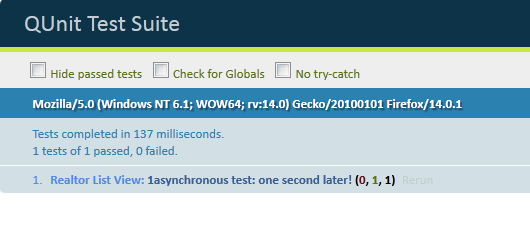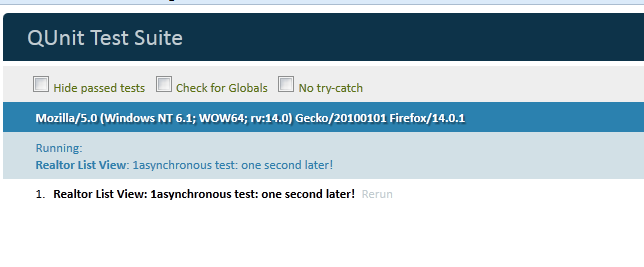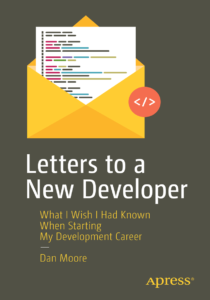I wrote a longish article looking at this question based on data from over 200,000 listings. Read my post and conclusions.
Towards a native maps plugin for PhoneGap/Cordova and Android
I recently did some prototyping for a native maps plugin for Android. For iOS/phonegap, you have the mapkit plugin which I was able to get working on phonegap 2.0, with some help from the google group. But for Android, the concensus seems to be that you should use the web version of Google Maps (either the javascript version or the static map images). While that advice works for a subset of users, if you pull out your Android phone and compare the performance between the web version of Google Maps and the native app, you’ll quickly choose the native app.
There are two paths forward for a native map plugin. The main limiting factor is that a native map view is only instantiable by a MapActivity,”because it depends on threads which access the network and filesystem in the background; these threads must be shepherded by the lifecycle management” of the MapActivity.
So, you can either:
- have your app be managed by a MapActivity and embed a Cordova webview in the app. This would probably work well for apps that are really really map heavy, and only have a slight bit of webUI. I’m not sure what value PhoneGap brings to that type of app, though. It also seems pretty complex.
- or have the PhoneGap app transition from DroidGap activity to the MapActivity and then back.
- which activity/technology gets the points to display initially
- which activity/technology gets points as the map is moved around
- testing on a real device (what do you do when you are running an Android device without native Google maps)
- passing full featured events back and forth between PhoneGap and the MapActivity
Nine years of blogging
Wow, it is hard to believe it has been nine years since my first post. This is the 660th post!
When I started my blog, I was just back from a sabbatical in Australia, living in a rented basement. Now I’m a family man with a house. When I started, I was a contractor, happy to get $40/hr to do development, tracking time and invoicing using MS word docs. Now I use google docs for almost everything, am an employee, and manage a department.
The benefits of blogging keep me going. I encourage everyone I meet to start a blog, because I think the act of writing forces you to crystallize your thoughts. It has certainly crystallized mine. I also enjoy the historical record, much like a public journal, and the projects I can look back on. Plus, it is fun to occasionally hear someone say ‘I ran across a post you wrote’.
My blog has been much more about broadcast than conversation. I think that’s because it varies in content, and in quality, and in timeliness. The couple of posts that have blown up were due to them turning into forums on a controversial topic (Yahoo Mail problems, Skadate review). But I’m OK with that.
I wish I had twice the time to write, but am happy that I’ve had the time I’ve had.
Thanks for reading!
The trigger creator sends emails when a google form is submitted and email is sent
Google Forms are a great way to collect data. You can have the form do any number of things using Google Apps Script when the form is submitted, including sending email.
If you want the email to come from a certain person, you can’t manipulate that in the script you write. (There’s nothing in the mail API doc about a ‘from’ field.) You can modify the reply to header, but if you want an email to come from one person, you need to have that person create the on form submit trigger, because they are then the active user.
Java address parsing gets an upgrade
I wrote last year about address parsing solutions in java, and how an open source project call JGeocoder had worked out well for us. I wanted to announce that my company, 8z, has significantly improved the address parsing capability of JGeocoder based on data from a number of property listings.
My colleague, Karamjeet Khalsa, added this functionality as well as more than fifty unit tests. An address that previously would have failed but now is parsed correctly is: 25266 Road 38.1 Dolores CO. Or try this one: 10 Black Bear Gypsum CO. This code focuses on not just parsing address, city and state, but also breaking apart the address into components like street number, unit number, etc (for US style addresses).
Working with the current maintainer of the project, Karamjeet uploaded the new jar yesterday, and it is now ready to download. This is the first release in four years, so if you need address parsing, go take a look!
A Tale of Two Mobile App Development Program Applications
I just can’t believe the difference in the application process between Google (for Google Play) and Apple (for the App Store).
For Google, I had to
- sign in to a Google account
- give them an email address and a phone number
- agree to terms and conditions
- pay $25 (but make sure you have a valid Google Wallet account!)
- wait for the registration to be processed
- invite other developers in my company
For Apple (where I need to register as a corporation) I had to
- Upgrade a mac to Lion
- Start the signup process
- Realize that the company doesn’t have an updated Dun and Bradstreet profile
- Call Dun and Bradstreet
- Be sent to http://iupdate.dnb.com/ to update the profile
- Find out who the executive officers of the company were
- Get them to sign up to update the profile
- Update the profile
- Submit it
- Wait for over 5 business days
- Resubmit my application to Apple
- Get rejected again because they didn’t recognize the company as a legal entity
- Exchange a couple of emails with Apple employees
- Determine what the rejection is possibly because I didn’t want for D&B to update the Apple database (up to 14 business days!)
And all that is before I can see (and agree to) the terms of use and pay the $99/year, and get my application processed.
Whew.
Running async tests with qunit and sinon
I ran into an issue running async tests with qunit and sinon. For a primer on doing this, see this great article.
Basically, the asyncTest never returned. This manifested itself in the html view of the tests like this (left is success, right is where the test never returns–note the white):
Turns out that sinon-qunit adapter has sinon fake the browser timer, so setTimeout doesn’t work as expected.
To fix, just turn off the timer faking for a single test: this.clock.restore() or sinon.config.useFakeTimers = false to disable this for all tests.
Google Analytics Goals and Forms on Google Sites
I recently put together a website for my father’s new book about World War II, and choosing Google Sites was a slam dunk. I choose a neutral theme, set up a few pages, uploaded some images and logged into Go Daddy (where my father had purchased his domain name) and set up DNS. Easy peasy.
Two issues came up. One minor and one major.
First, there is no easy way to point the bare domain at google sites using Go Daddy’s tools. So seesaw1942.com can’t be redirected to www.seesaw1942.com. Minor bummer, but just make sure all the marketing contains www.seesaw1942.com
I set up a form to capture email addresses for people who wanted to be informed when the book was actually published (it is now!). I was interested in playing around with PPC to drive people to the website, but wasn’t able to set up a goal in Google Analytics to measure signup success. (So I didn’t end up setting up PPC.)
I looked around and didn’t find anything that would help with this. Here’s an article about goals and Google Forms, but the writer’s form lives on their own server, which gives them more latitude than someone working with Google Sites.
Anyone have any idea how to do this?
Geolocation and the Android 2.3.3 emulator
Just so someone else doesn’t waste an afternoon banging their head against a wall, here’s how to make the Android 2.3.3 emulator work if you want to access geolocation. This applies to the javascript apps I’m writing–I don’t know if a native app would have the same issue.
- Install an Android 2.2 AVD (2.3.3 doesn’t work with geolocation). Make sure you enable the GPS in your hardware settings when setting up the AVD. That’s right, the first step to making the Android 2.3.3 emulator work is to downgrade to Android 2.2. Why would you want to target 2.3.3+?
- Make sure you add <uses-permission android:name=”android.permission.ACCESS_FINE_LOCATION” /> to your Android manifest.
- Add <uses-feature android:name=”android.hardware.location.gps” android:required=”false” /> just to be sure.
- Start your emulator and install your software.
- telnet localhost 5554 (if you don’t have telnet installed on Windows 7, here’s how to enable it).
- In the telnet window, type in “fix geo -101 50”. Note that you can’t use the backspace, so cutting and pasting is your best option. Also note that longitude is before latitude.
- Execute the action that requires a geolocation. (If using phonegap, make sure to pass these options to the geolocation call: { enableHighAccuracy: true }.)
You should see a GPS satellite in the notification bar of your emulator.
Also, note that each time you execute the action that calls the geolocation service of your phone, you have to type the ‘fix geo…’ line in the telnet session.
I also found this page useful for testing.
Simple REST database solutions
I’ve been looking for a simple solution to generate a REST api for a mysql database, with minimal to no coding. I need to be able to do simple inserts and updates, and some simple querying (including for number ranges and or clauses).
The options are few and none seems to entirely fit the bill.
- RestSQL is a java layer that has a simple XML configuration. It supports some advanced features (triggers for biz logic, table composition) but doesn’t yet have numeric comparisons for gets.
- DBSlayer is a C program that doesn’t do REST, but does JSON results for SQL queries over HTTP
- PHPRest is a RESTful interface. From the docs, it is not clear if it supports JSON or any queries more complex than by primary key.


